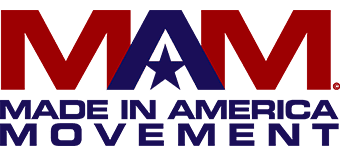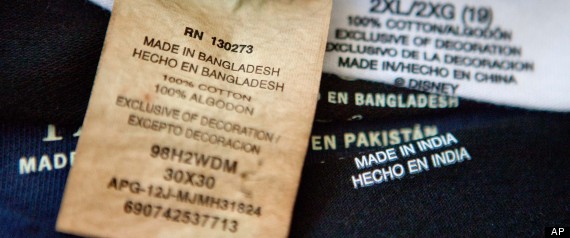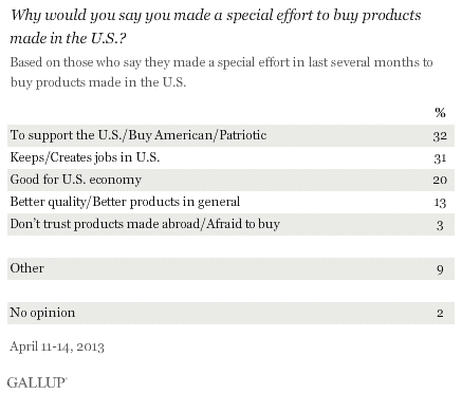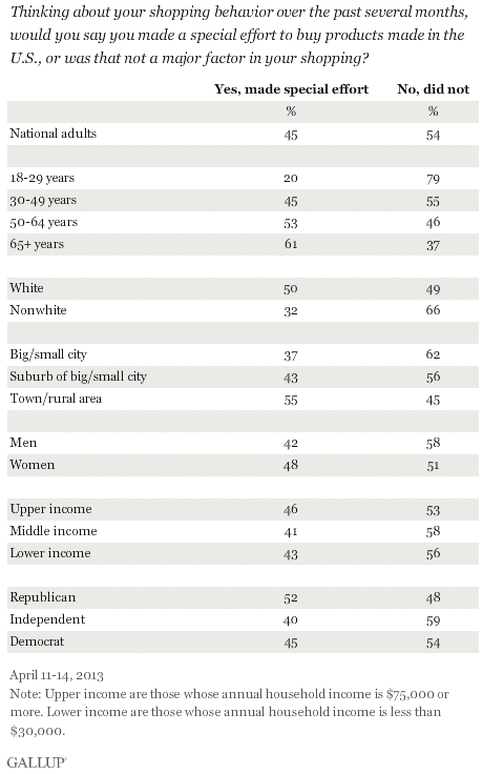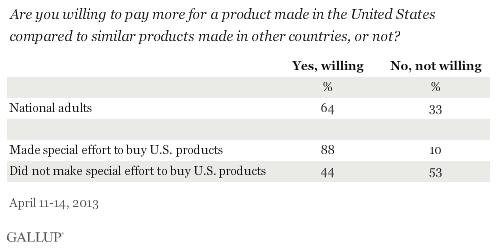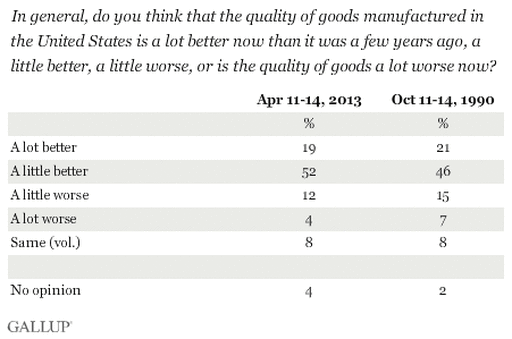It’s hardly news when a U.S. firm moves its manufacturing operations abroad to China. But what about when a Chinese company sets up a factory in the United States?
That happened in January, when Lenovo, a Beijing-based computer maker, opened a new manufacturing line in Whitsett, N.C., to handle assembly of PCs, tablets, workstations and servers.The rationale? The company is expanding into the U.S. market and needs the flexibility to assemble units for speedy delivery across the country, says Jay Parker, Lenovo’s president for North America.But also — and this was crucial — the math added up. While it’s still cheaper to build things in China, those famously low Chinese wages have risen in recent years. “We reached the point where we could offset a portion of those labor costs by saving on logistics,” Parker says.
U.S. firms that have long operated abroad are making similar moves: Caterpillar, GE and Ford are among those that have announced that they’re shifting some manufacturing operations back to the United States. And economists are debating whether these stories are a blip — or whether they signal the beginning of a major renaissances for American manufacturing.
It’s easy to be skeptical. So far, the effect on jobs has been modest. Since January 2010, the United States has added 520,000 manufacturing jobs — and of those, 50,000 have come from overseas firms moving here, according to the Reshoring Initiative, an industry-led group. (That includes 115 in the new Lenovo plant.) That’s a decent number, but it pales beside the 6 million factory jobs that the Bureau of Labor Statistics says vanished between 2000 and 2009.
Yet the optimists counter that the logic of a coming renaissance is impeccable. Besides the shrinking wage gap between China and the United States, the productivity of the American worker keeps rising. And the surge in shale gas drilling gives the United States a wealth of cheap domestic energy to bolster industries such as petrochemicals.
All that could combine to make U.S. factories more competitive in the years ahead, not just with Europe and Japan, but with the manufacturing behemoth inChina. This shift likely won’t mean the United States will have 19 million manufacturing workers again, the way it did in the 1980s. For one thing, automation is still a powerful force. And the types of jobs that come back will be different from the ones that vanished. Still, any significant uptick in domestic manufacturing after a decades-long decline could bolster the economy and spur innovation.
“I think it’s fair to say this hasn’t all registered in the data just yet,” says Scott Paul, the president of the Alliance for American Manufacturing. “But we’re starting to lay the groundwork where we’ll start to see a real effect three to 10 years from now.”
Laying the groundwork
So what does that groundwork look like? For many analysts, the narrowing of the wage gap between China and the United States is the most significant factor.China has been getting wealthier, and its factory workers are demanding ever-higher wages. Whereas the gap in labor costs between the two countries was about $17 per hour in 2006, that could shrink to as little as $7 per hour by 2015, says Dan North, an economist with Euler Hermes, a credit insurer that works with manufacturers.
“If you’re a U.S. company and the advantage is only $7 per hour, suddenly it may be worth staying home,” North says. “If I stay here, I have lower inventory costs, lower transportation costs. I’m closer to my market, I can have higher-quality production and I can keep my technology.”
This notion appears to be catching on. In February 2012 survey from the Boston Consulting Group (BCG), 37 percent of U.S. manufacturers with sales above $1 billion said they were considering shifting some production from China to the United States. The factors they pointed to were not only that wages and benefits were rising in China, but the country is also enacting stricter labor laws and experiencing more frequent labor disputes and strikes.
“Companies are realizing it’s not as easy to do things in China as they thought,” says Hal Sirkin, a senior partner at Boston Consulting Group who has been predicting the convergence of labor costs since 2011.
The flip side is that American workers are becoming more attractive — for a mix of reasons. Worker productivity has been rising steadily over the years. Also, BCG says, the decline of U.S. organized labor is luring companies home, particularly to the nonunion South. Unions, for their part, have often responded by allowing wages to fall in order to keep jobs in the United States. Ford started bringing back production from China and Mexico after an agreement with the United Auto Workers let the company hire new “second-tier” workers at lower wages.
As a result, Sirkin’s research at BCG suggests that some industries could slowly migrate back from China. That includes industries such as plastic and rubber, machinery, electrical equipment and computers and electronics.
Nor is it just China. BCG also found that the United States is on pace to have lower manufacturing costs than Europe and Japan by 2015. Already, companies in those regions have been moving production here. Nissan, Honda, and Toyota are ramping up their exports from the United States. In 2008, Ikea opened a new furniture factory in Danville, Va., to cut shipping costs. The European aerospace company Airbus has just broken ground for a new factory in Mobile, Ala.
America’s glut of cheap natural gas from shale fracking is also attracting its subset of industries. Factories being built in Texas and Pennsylvania will convert natural gas into ethylene, a key ingredient in plastics and antifreeze. An Egyptian company, Orascom Construction, is building a $1.4 billion fertilizer plant in Iowa near a natural-gas pipeline.
Most of the evidence that “reshoring” is happening is anecdotal, and there’s a limit to how far it is likely to go. For one thing, North says, the industries most reliant on cheap labor — including textiles and mass-produced clothing — will likely never return to the United States. Moreover, China has built up a formidable manufacturing infrastructure that will keep many companies there, even as labor costs shift.
“Chinese suppliers have now developed dense supplier networks that now have their own capabilities for introducing new products,” says Suzanne Berger, a political science professor at the Massachusetts Institute of Technology who studies manufacturing. “And, of course, China is a market that’s growing extremely rapidly — so many companies will want to stay in close proximity to those customers.”
But the early signs are notable. Sirkin points out that his model of labor costs didn’t predict that companies would start coming back to the United States until 2015: “We’ve already seen more movement than we expected.”
Industry has changed
Policymakers’ efforts to bolster domestic manufacturing, however, will have to take into account how dramatically the industry has changed since the 1980s.
In a recent report, an MIT task force described how the U.S. manufacturing landscape is no longer dominated by large firms such as Dupont, IBM and Kodak that could handle every aspect of production themselves. Instead, the future of manufacturing will consist of smaller firms that may not always have enough money to train workers, commercialize new products and procure financing on their own.
“There are these holes in the ecosystem, and we have to think of another way to provide all these capabilities if we want to see manufacturing revived,” says Berger, a co-author of the report.
Some firms have partnered with local universities or governments to develop these capabilities, she says. In Rochester, N.Y., for instance, the demise of Kodak meant that there was no longer a dominant company paying to train new skilled workers. So smaller firms in the optics industry banded together to plan new community college curricula and fill the gap.
In New York, the state government has tried to support semiconductor manufacturing by bringing together private firms, research labs and degree programs to share common facilities, expensive equipment, training and research.
The Obama administration is spending $1 billion to fund similar hubs around the country. The first is the National Additive Manufacturing Innovative Institute in Youngstown, Ohio, which will focus on the development of 3-D printing and other processes for manufacturing objects from digital models.
According to the MIT report, such partnerships have the potential to be far more effective than the old model of handing out tax breaks for manufacturers. That’s because they don’t leave a state or locality at the mercy of a single firm that could leave at any time.
How many jobs will return?
There’s also the key question of how many jobs are likely to come back. The United States has 11.9 million manufacturing employees, and experts tend to agree we’re unlikely to see a return even to the much-diminished levels of the 1990s, when there were more than 17 million factory positions.
President Obama has set a more modest goal of 1 million new manufacturing jobs by the end of his second term. But Paul of the Alliance for American Manufacturing says the country is behind pace to achieve even that “reasonable goal.”
The new manufacturing jobs, meanwhile, will also be different from the jobs of old. For one, many plants are now setting up in the nonunion South, and organized labor has largely been shut out of the manufacturing renaissance. On balance, all of the job gains since 2009 have been nonunion. And, unlike 30 years ago, manufacturing jobs no longer have higher average annual earnings than the typical private-sector worker.
At the same time, technological advances will continue to displace factory jobs in the United States and elsewhere. Germany and China — two manufacturing titans — are slowly losing positions because of automation. A report last fall by the McKinsey Global Institute found that the price of robots relative to the cost of human labor has fallen 40 to 50 percent since 1990, and that trend is expected to continue.
Paul, however, points out that Germany has lost jobs at a much slower pace than the United States over the past decade, which suggests that there’s room for improvement. “There’s nothing inevitable about the sort of steep declines we’ve seen here.”
What’s more, experts point out that there are still plenty of other advantages to bringing manufacturing back home. Manufacturing firms tend to spend more on research and development than other businesses, and recent research has focused on the fact that the act of building things can lead to key innovations. Procter & Gamble and Gillette are two companies known for their run-of-the-mill products — diapers and razors — that have turned innovations in the manufacturing process into a key part of their business.
What’s more, the MIT report says, manufacturing can be a potent driver of other service-industry jobs. A small company in Ohio that makes protective sleeves for pipelines, say, will be in a good position to offer technical support for oil platforms and other companies.
“We have the wrong picture if we think on the one hand there’s manufacturing and on the other hand services,” Berger says. “And the idea that we’re going to just go from one to the other is wrong. Almost all valuable things are some bundle of manufactured goods plus services attached.”
